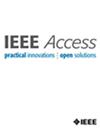使用矩形穿孔的3d打印轻质超材料吸收体
IF 3.6
3区 计算机科学
Q2 COMPUTER SCIENCE, INFORMATION SYSTEMS
引用次数: 0
摘要
超材料吸收器(MMAs)的设计目的是实现对电磁辐射的几乎完全吸收。在射频场中,mma表现出来自射频共振的吸收行为。因此,mma在隐身涂层等领域非常有用。然而,由于其重量大,MMA单元电池用于隐身应用受到限制。在本文中,我们证明了在耶路撒冷十字MMA单元胞中,重量减轻了61.31%,PLA体积减少了66.22%,而对共振频率和吸收率等关键吸收性能的影响最小。这是通过选择性地从单晶胞内介电层的角落和近边缘区域去除材料来实现的。用$12\ × 12$ MMA单元格组成的阵列验证了仿真结果,在10.33 GHz处观察到谐振行为,吸光度为99.84%。采用聚乳酸作为3D打印介质材料,银浆制备导电表面。本研究的结果证明了轻量化MMA设计在实际应用中的可行性。本文章由计算机程序翻译,如有差异,请以英文原文为准。
3D-Printed Lightweight Metamaterial Absorber Using Rectangular Perforations
Metamaterial absorbers (MMAs) are designed to achieve near-total absorption of electromagnetic radiation. In radio-frequency fields, MMAs exhibit absorption behavior that stems from RF resonance. Thus, MMAs are useful in fields such as stealth coatings. However, the use of MMA unit cells for stealth applications is limited due to their heavy weight. In this paper, we demonstrate that a weight reduction of up to 61.31% and a 66.22% decrease in PLA volume can be achieved in a Jerusalem Cross MMA unit cell, with minimal impact on key absorptive properties such as resonant frequency and absorptivity. This was accomplished by selectively removing material from the corners and near-edge regions of the dielectric layer within the unit cell. The simulation results were verified with an array consisting of $12\times 12$ MMA unit cells, where resonant behavior was observed at 10.33 GHz with an absorptivity of 99.84%. Polylactic acid was used as the dielectric material for 3D printing, and the conductive surfaces were fabricated using silver paste. The results of this study demonstrate the feasibility of lightweight MMA designs for real-life applications.
求助全文
通过发布文献求助,成功后即可免费获取论文全文。
去求助
来源期刊

IEEE Access
COMPUTER SCIENCE, INFORMATION SYSTEMSENGIN-ENGINEERING, ELECTRICAL & ELECTRONIC
CiteScore
9.80
自引率
7.70%
发文量
6673
审稿时长
6 weeks
期刊介绍:
IEEE Access® is a multidisciplinary, open access (OA), applications-oriented, all-electronic archival journal that continuously presents the results of original research or development across all of IEEE''s fields of interest.
IEEE Access will publish articles that are of high interest to readers, original, technically correct, and clearly presented. Supported by author publication charges (APC), its hallmarks are a rapid peer review and publication process with open access to all readers. Unlike IEEE''s traditional Transactions or Journals, reviews are "binary", in that reviewers will either Accept or Reject an article in the form it is submitted in order to achieve rapid turnaround. Especially encouraged are submissions on:
Multidisciplinary topics, or applications-oriented articles and negative results that do not fit within the scope of IEEE''s traditional journals.
Practical articles discussing new experiments or measurement techniques, interesting solutions to engineering.
Development of new or improved fabrication or manufacturing techniques.
Reviews or survey articles of new or evolving fields oriented to assist others in understanding the new area.
 求助内容:
求助内容: 应助结果提醒方式:
应助结果提醒方式:


